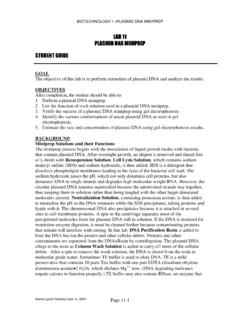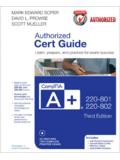Transcription of PICDEM Lab II Development Board Layout and …
1 AmericasAtlanta - 678-957-9614 Austin - 512-257-3370 Boston - 774-760-0087 Chicago - 630-285-0071 Cleveland - 216-447-0464 Dallas - 972-818-7423 Detroit - 248-848-4000 Houston - 281-894-5983 Indianapolis - 317-773-8323 Los Angeles - 949-462-9523 New York - 631-435-6000 Phoenix - 480-792-7200 Santa Clara - 408-961-6444 Toronto - 905-673-0699 EuropeAustria - Wels - 43-7242-2244-39 Denmark - Copenhagen - 45-4450-2828 France - Paris - 33-1-69-53-63-20 Germany - Munich - 49-89-627-144-0 Italy - Milan - 39-0331-742611 Netherlands - Drunen - 31-416-690399 Spain - Madrid - 34-91-708-08-90UK - Wokingham - 44-118-921-5869 Asia/PacificAustralia - Sydney - 61-2-9868-6733 China - Beijing - 86-10-8569-2100 China - Chengdu - 86-28-8665-5511 Asia/Pacific (Continued)China - Chengdu - 86-28-8665-5511 China - Chongqing - 86-23-8980-9588 China - Donguan - 86-769-8702-9880 China - Hangzhou - 86-571-8792-8115 China - Hong Kong SAR - 852-2943-5100 China - Nanjing- 86-25-8473-2460 China - Qingdao - 86-532-8502-7355 China - Shanghai - 86-21-5407-5533 China - Shenyang - 86-24-2334-2829 China - Shenzhen - 86-755-8864-2200 China - Wuhan - 86-27-5980-5300 China - Xiamen - 86-592-2388138 China - Xian - 86-29-8833-7252 China - Zhuhai - 86-756-3210040 India - Bangalore - 91-80-3090-4444 India - New Delhi - 91-11-4160-8631 India - Pune - 91-20-3019-1500 Japan - Osaka - 81-6-6152-7160 Japan - Tokyo - 81-3-6880-3770 Korea - Daegu - 82-53-744-4301 Korea - Seoul - 82-2-554-7200 Malaysia - Kuala Lumpur - 60-3-6201-9857 Malaysia - Penang - 60-4-227-8870 Philippines - Manila - 63-2-634-9065 Singapore - 65-6334-8870 Taiwan.
2 Hsin Chu - 886-3-5778-366 Taiwan - Kaohsiung - 886-7-213-7828 Taiwan - Taipei - 886-2-2508-8600 Thailand - Bangkok - 66-2-694-1351 01/27/15 Microchip Technology Inc. 2355 West Chandler Blvd. Chandler, AZ Microchip name and logo, the Microchip logo, and MPLAB are registered trademarks of Microchip TechnologyIncorporated in the and other countries. All other trademarks mentioned herein are property of their respectivecompanies. 2015, Microchip Technology Incorporated, Printed in the All Rights Reserved. 06/15DS40001798 AThe PICDEM Lab II Development Board Layout and Schematic Information SheetOverviewThe PICDEM Lab II Development Board Layout and Schematic can be found on theMicrochip web Board provides hardware design flexibility for experimentation through a variety ofDIP microcontroller sockets coupled with a solderless breadboard.
3 It also includes twofixed and one variable power supply, plus a USB to Serial/I2C converter. Additionally,it features a USB mini-B connector, two open format connectors (one for expansion, onefor an LCD module), and a pair of mikroBUS host connectors to accommodate avariety of plug-in modules. The PICDEM Lab II is fully compatible with MPLAB CodeConfigurator and MPLAB X or Power-UpOn- Board power consists of two fixed voltages and one variable voltage. The two fixedvoltages are and and the variable supply can produce to All threepower supplies can be powered from the 9V barrel connector, the USB voltage from theUSB-Serial/I2C , or supplied via four test points (TP1 and TP2 for 5V, TP3 and TP4 ).Using USB power, the and supplies are limited to 100 mA.
4 Using the 9 Vsupply, both and are capable of Using external supplies, the Board islimited to the external supplies limit, however, a maximum of a to limit isimposed on the breadboard of the Box LabsA complete selection of parts and wires for four individual labs are included with thePICDEM Lab II Board : A Hello World LED Project An IR Remote Control Link A Power Converter Project A Class D Audio AmplifierThe lab manuals and additional labs are available on the Microchip web LayoutThe PICDEM Lab II Development Board is shown in Figure 28/40-pin socket, the 8/14/20-pin socket, the 18-pin socket and 8-pin socket areprovided for connecting DIP package microcontrollers to the corresponding ICSP programming/debugging connectors ICSP4, ICSP3, ICSP2 and 2 and 6 control the source of the and :The recommended wire diameter for the white breadboard is AWG PICDEM Lab II Development Board Layoutand Schematic Information SheetDS40001798 AIf both jumpers connect the center and the top contacts (toward the 9V input), the are supplied by a pair of 1A switching regulators driven by the 9V input.
5 If bothjumpers connect the center and the right contacts (toward the Click boardconnectors), the and are supplied by the external power supply test points(TP1/2 , TP3/4 ; red test points are positive connections and black arenegative). If both jumpers connect the center and the bottom contacts, the are supplied from the USB- blue potentiometer R7 adjusts the variable power supply voltage and is capable ofsupplying maximum 100 is a PICkit serial style connection for Serial/I2C. This device will enumerate as bothan I2C peripheral and a COM port on a PC. An additional USB Mini-B socket J17 is available through connector J22 formicrocontrollers capable of supporting a USB interface. Connectors J5 and J8 provideGND, variable voltage, , and Click boards may be loaded into the sockets and wired individually to any of themicrocontrollers.
6 Power and ground for the Click boards are supplied throughexisting connections to the J9/10 and J11/16 are provided for connecting external boards, LCDmodules or Recommended Equipment and Software: PG164130 PICkit 3 Programmer/Debugger DV244005 REAL ICE Programmer/Debugger MPLAB X IDE MCC MPLAB Code Configurator MPLAB XC CompilersNote:A driver is required for the I2C operation, which can be downloaded,along with a terminal program, from the Microchip web :Only VSS is connected to the microcontroller DIP sockets, VDD must besupplied from the appropriate power supply voltage, see connectors J5and J8 1: PICDEM LAB II Development Board AND SCHEMATICICSP ConnectorsUSB to I2C /SerialPower Switch and & suppliesPower selectjumpersUSB HeaderVari able voltage controlmikroBUS Host connectorsLCD Module ConnectorExpansionboardconnectorMicrocon trollersockets: 40, 28,20, 18, 14, 8, 6 Power connections















